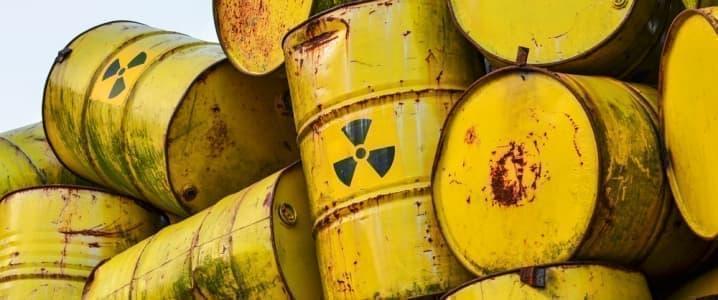Nobel Prize Winner Suggests Blasting Nuclear Waste With Lasers
Authored by Haley Zaremba via OilPrice.com,
Many have made strong arguments for the potential of nuclear power to be the clean energy solution of the future. As the need to curb carbon emissions grows more dire, the ultra-efficient, zero-emissions energy provided by nuclear looks like a more and more obvious solution.
There are some major drawbacks, however, to nuclear energy. Of course, there is the ever-present concern of a nuclear meltdown that has kept civilians and politicians alike extremely wary of widespread nuclear energy production in the wake of high-profile tragedies like those at Fukushima, Three Mile Island, and Chernobyl. While the death toll from nuclear disasters is actually quite low, the long-term damage from these tragedies endures. In Japan, the government has been using so much water to keep the reactors at Fukushima from overheating since the 2011 disaster that they have run out of space to store it and have even considered dumping the radioactive wastewater into the Pacific Ocean. As for Chernobyl, well…you’ve all seen the miniseries.
And then there is the major issue of nuclear waste. As efficient and carbon-free as it is, nuclear power certainly isn’t the cleanest form of energy production, thanks to its extremely hazardous byproducts that can stay radioactive for millions of years. Making matters worse, there is still no scientific consensus on how to solve this issue. In the United States, the burden of paying to store and maintain nuclear waste deposits falls on the taxpayers, and the price tag is massive. As Oilprice reported last year in a report aptly titled “The Crushing Cost Of Nuclear Waste Is Weighing On Taxpayers,” keeping us safe from our own nuclear waste is extremely costly and will only grow more expensive the more waste we create. “Now, that price tag has reached a whopping $7.5 billion,” we reported, “and that number is only going to keep growing.”
But now, for the first time, there may be a solution to the previously unsolvable nuclear waste issue.
Nobel laureate Gérard Mourou has proposed a novel solution that smacks of science fiction and revolves around blasting nuclear waste with lasers.
Morou and his research partner Donna Strickland won their Nobel Prize in 2018 for their work with Chirped Pulse Amplification (CPA), a revolutionary invention that creates extremely rapid and ultra-powerful laser pulses with lots of different potential applications.
“The original research focused on applications like laser machining and eye surgery,” reports ExtremeTech, “but scientists could also use it to observe atomic processes that happen at almost unfathomable speeds. If we could speed it up a bit more, Mourou says CPA could have a use in processing nuclear waste, too.”
According to Mourou’s hypothesis, CPA could turn even the most nuclear waste we have sitting in secure storage facilities around the world, where it will otherwise remain radioactive for millions of years, into a substance so safe you could hold it in the palm of your hand. Of course, the CPA process will require a bit of tweaking to get to this point of capability.
“Currently, CPA can produce laser pulses as brief as one attosecond — that’s a billionth of a billionth of a second. To transmute nuclear waste into something safe, Mourou says you’d need to increase the pulse rate by roughly 10,000 times,” says ExtremeTech.
“That might sound like a tall order, but CPA itself was an order of magnitude increase over previous lasers. Another innovation like CPA, and we could be in the ballpark.”
The method would work by blasting nuclear waste with a laser pulse so strong and fast that it could knock protons out of the nuclei of dangerous substances like uranium 235 and plutonium 239, rendering them harmless. If this technology, which other experts agree makes sense in theory, could actually be invented and applied in the next couple of decades, it would be difficult to overstate the impact it would have on our energy sector and, indeed, the entire world. In order to avoid the fast-approaching tipping point for catastrophic climate change, we need to decarbonize fast and starting right now. Solving the problem of nuclear waste would make that a whole lot safer and more attainable.
Tyler Durden
Fri, 11/08/2019 – 20:25
via ZeroHedge News https://ift.tt/2WVETSy Tyler Durden
